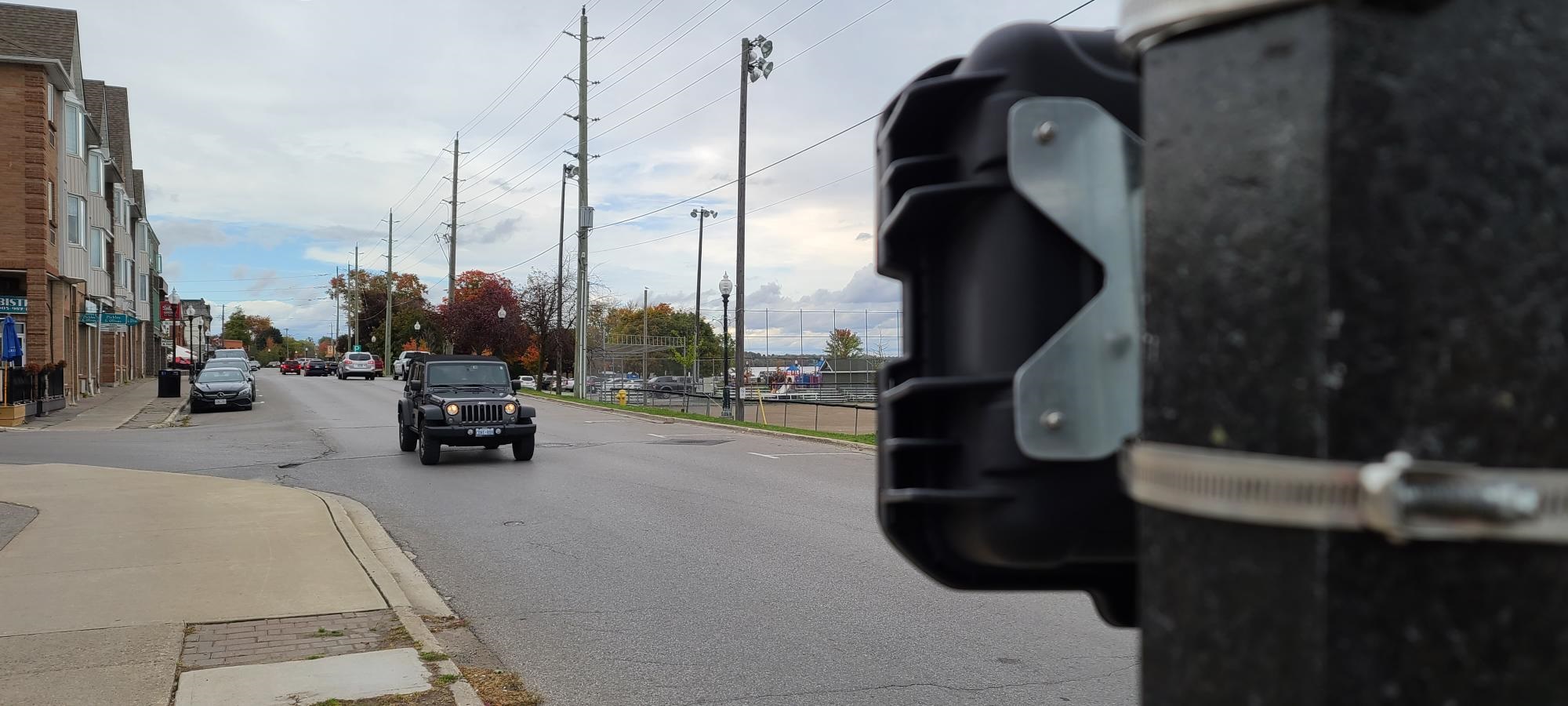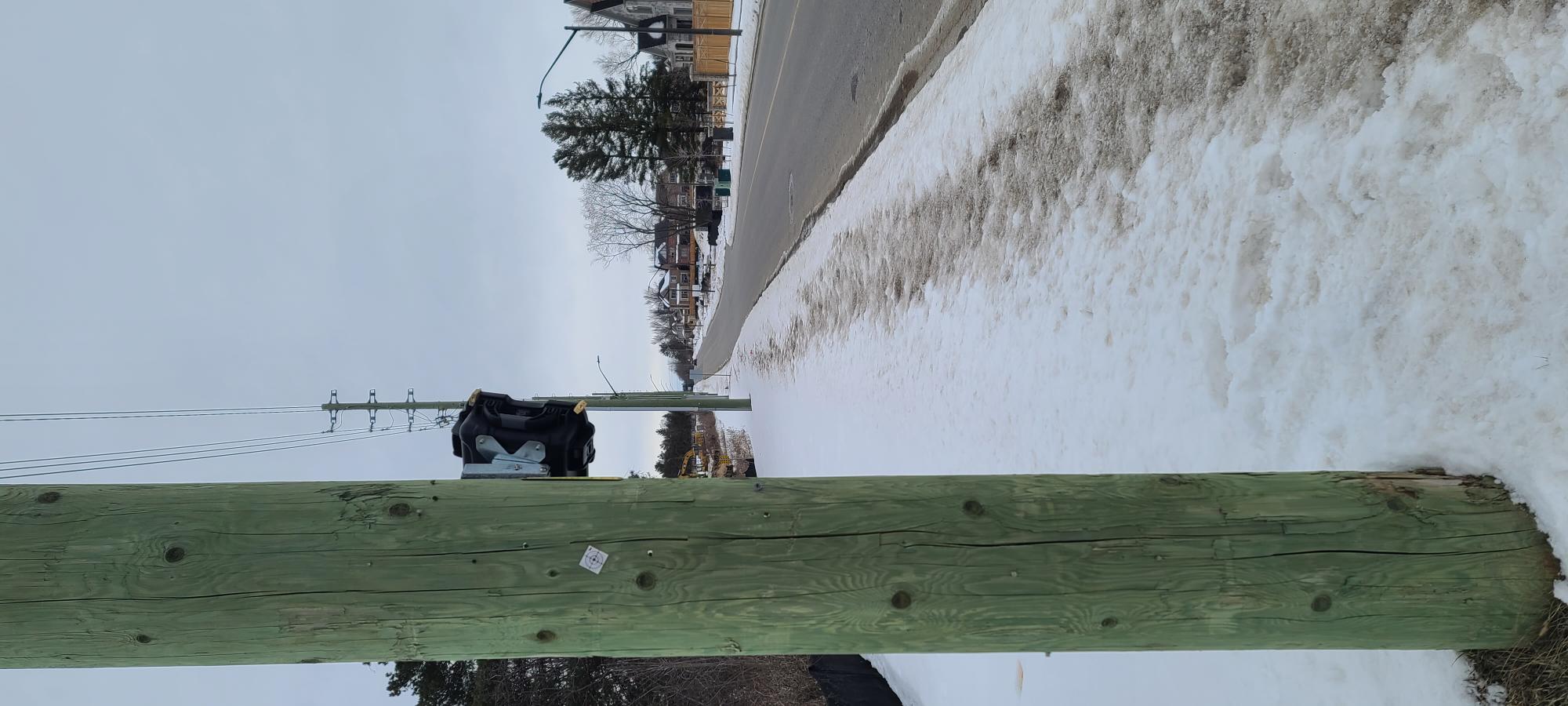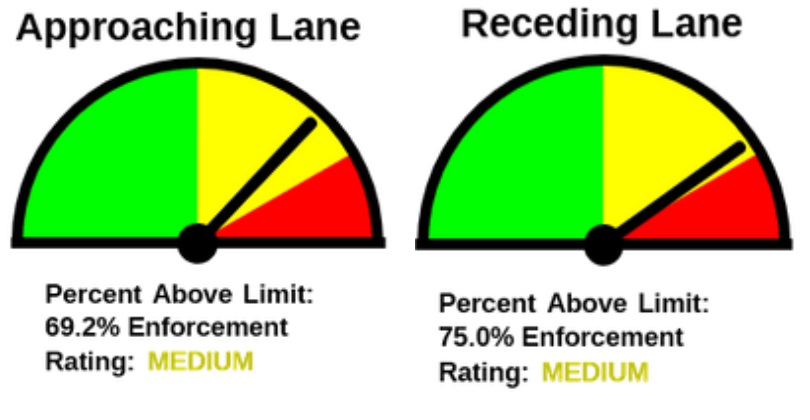
In recent years, the issue of speeding, high traffic volumes and aggressive drivers in communities and school zones has become a growing concern in Canada. Unlawful driving puts pedestrians at risk, as well as installers deploying technology to monitor and enforce safer road usage. To address this problem and prioritise safety for all, gathering data on speeding violations and road usage has emerged as a valuable tool.
AGD Systems, designer and manufacturer of urban traffic and pedestrian control products, and North Line Canada, provider of traffic, data and asset management solutions, have taken a proactive approach to traffic management. The firms see benefits in their collaborative solution, designed to enhance safety levels in key zones across North America.

The value of data
Like many other locations globally, community safety programmes in Canada encompass a wide range of initiatives and strategies to promote safety, crime prevention and wellbeing within local communities. These initiatives often involve collaboration between various stakeholders, including law enforcement, community organisations, local businesses, schools and residents.
When an initial complaint has been made to the authorities, while colloquial feedback from ‘eyes on the ground’ is essential, undertaking an unbiased traffic study is vital before any formal action can be taken. To enhance safety levels in these locations, it is necessary first to gather and analyse the data to understand the scale of the problem. Traffic studies can highlight issues at given periods of the day or support the case for enforcement or other traffic management measures.
Supported by data, authorities have the hard evidence they need to analyse traffic flow effectively, identify problematic areas and behaviours, and develop strategies to manage traffic better, enhancing road safety and efficiency.
In Canada, depending on the situation, strategic changes may begin with educational initiatives to raise awareness about the dangers of speeding and promote responsible driving behaviour, or fundamental changes to the site may be required - such as adjusting speed limits, installing traffic calming measures or optimising signal timings.
“Our customers see power in hard data and request it as a way of future-proofing systems” Jim Sheehan, North Line Canada
This targeted monitoring also feeds into the average annual daily traffic (AADT) counts, which must be carried out four times a year on roads of a particular classification in Canada and the US. This important metric is used to understand traffic patterns, identify congestion points and forecast future traffic volumes to support efficient and safe transportation system updates and management.
“Regarding communities and school zones, where there is an elevated risk to pedestrians, traffic studies usually occur over seven to 10 days, look at issues such as speeding violations, and feed into AADT data,” explains Jim Sheehan, director of sales, research & development at North Line Canada. “Aside from accessing data to back up the need for immediate action to improve safety, there is also a strong requirement for data to use in the future. Our customers see power in hard data and request it as a way of future-proofing systems. It may be that planned investment or advancements in technology will allow them to use the data at a later point. This means solutions need to consider society's future traffic management and enforcement needs and develop technologies ahead of their time.”

A collaborative solution
With the notion of ‘data is power’ in mind, North Line worked with AGD to integrate a specialist radar, the 331, into the Fox product solution. The result is an all-in-one solution for authorities who need to gather detailed dynamics about road usage and daily and AADT.
The Fox captures vehicle data and reports on volume, speed and direction of travel, with multi-lane detection, all with a date and time stamp per event. The radar is combined with a processor and on-board modem, which allows data to be accessed remotely through North Line's proprietary reporting software. The smartphone app software will enable users to view real-time data or create more detailed reports. This granular data allows for 85th-percentile calculations, speed reporting and AADT compliance reporting, all while being simple to use and quick to deploy by the end user.
Crucially, the non-intrusive device can be deployed either in a temporary or permanent location off to the side of the roadway, away from live traffic, keeping installers safe from high-speed vehicles or aggressive road users. Another key consideration to further enhance safety is reliability and reassurance that the solution is rugged enough to withstand the harsh Canadian winters. AGD had already put its 331 radar through US National Electrical Manufacturers Association (Nema) testing, which involves subjecting electrical equipment to a series of rigorous tests under controlled conditions to assess its suitability for use in specific applications and environments.
“The 331 radar was designed to offer a direct physical retrofit capability for those wishing to build additional functionalities into the solution, and this ease of integration has enabled North Line to create a bespoke detection platform,” says Dean Jarvis, commercial engineer at AGD. “Operating in the 24GHz K-band, the 331 offers accurate speed and range measurement while discriminating between advancing and receding traffic; these features make the radar ideal for use in communities and school zones, where pedestrians face heightened risks.”
“The 331 radar was designed to offer a direct physical retrofit capability for those wishing to build additional functionalities into the solution” Dean Jarvis, AGD
Originally intended for speed awareness signs, the 331's versatility positioned it as the optimal selection for integration into the Fox system.
“Its initial design for compatibility with other products resulted in a compact form factor, allowing us to ship more units internationally with reduced packaging and yielding environmental benefits,” Jarvis continues. “Additionally, the minimal waste generated from disassembly and reintegration into the Fox product further emphasises its efficiency and eco-friendly attributes.”
North Line’s Sheehan adds: “We needed the ability to install the system anywhere, so it had to be standalone. The low power draw of the 331 radar meant that we could achieve a sufficient run time rate to perform a study over seven or more days. AGD also worked with us to develop a low-speed version of the 331 so we could use it for specific applications, further proving the importance of collaboration and manufacturers’ agility.”
On the ground feedback
The Surrey Royal Canadian Mounted Police (RCMP) is presently utilising four Fox radar systems supplied by North Line Canada. “These units have been critical to our operations on several fronts,” explains Corporal John Stables of Surrey RCMP Traffic Services. “They assist with data collection which allows us to liaise with City officials to implement Traffic Calming Measures, such as speed humps, speed reader boards and roundabouts.”
The radars have also enabled Stables’ unit to carry out intelligence-led enforcement. “These advancements means that we have been able obtain intelligence, deploy our units to specific areas, and have been able to instruct officers as to what day and what time to be in that area for enforcement action,” he adds.

“This intelligence-led approach has allowed us to deploy our officers to where they are needed, when they are needed. Importantly, we can now rule out areas that the officers are not needed, ensuring resources are used in an effective way.”
In a community setting, Christine Kinahan, engineering technician at The Corporation of the Town of Lincoln, explains why Fox has emerged as the initial course of action. “The Fox radar units have allowed us to identify problem areas with qualified and quantified data pertaining to speed and traffic volumes and to target specific times of day when issues are clearly present,” she says. “These are our first line of action when a resident or council complaint is received and have provided exceptionally valuable and complete data in all weather and both urban and rural locations.”
In summary, temporary detection systems serve an instrumental role in data collection, enabling intelligence-led enforcement and targeted traffic management initiatives, leading to improved road and community safety.











